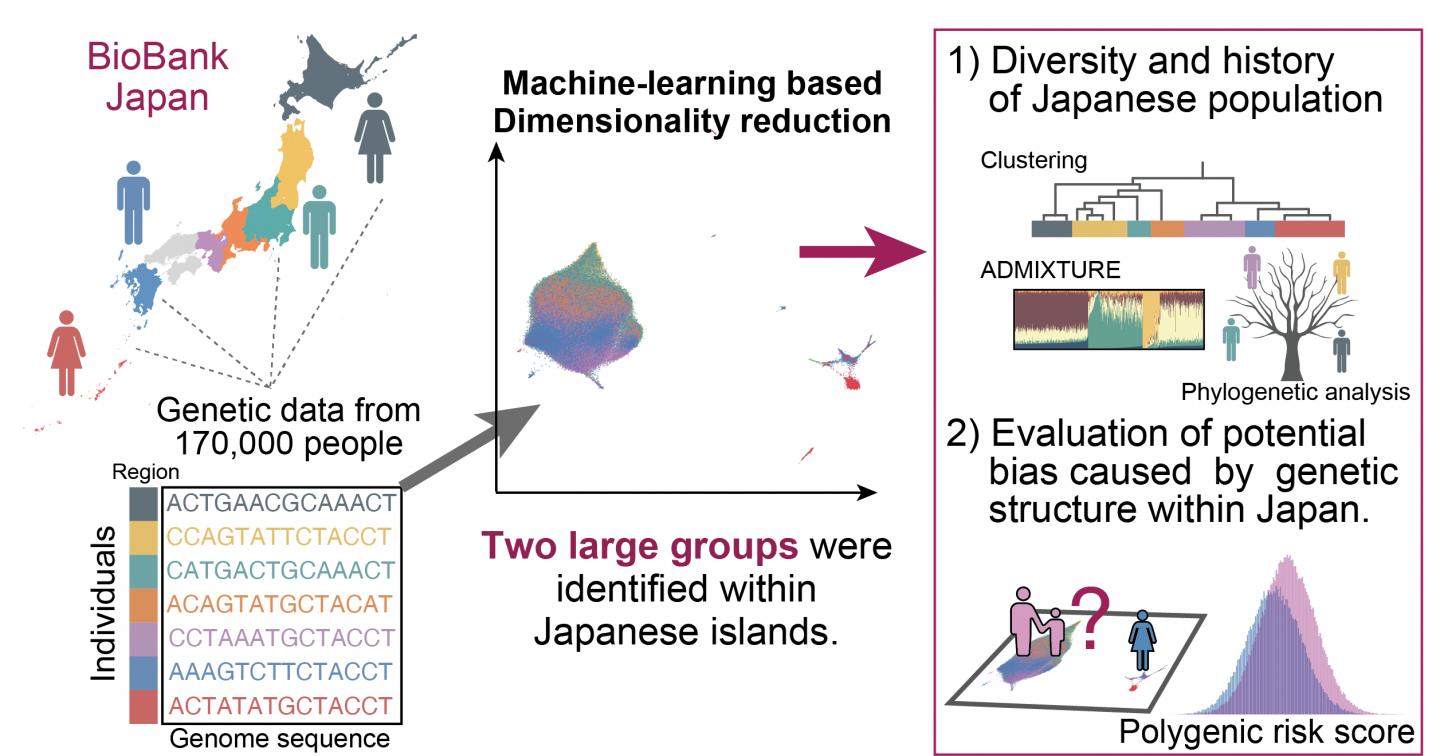Researchers led by Osaka University use dimensionality reduction analyses to identify fine-scale differences in the Japanese population, revealing greater population structure than previously thought

Credit: Saori Sakaue and Yukinori Okada at Osaka University
Osaka, Japan – Geographically isolated from mainland Eurasia, the island nation of Japan has seen little in the way of population mixing for thousands of years. In fact, after two waves of human migration–one 40,000 years ago from Southeast Asia and one 3,000 years ago from the Korean Peninsula–Japanese people are recognized as a relatively homogeneous and isolated population.
But in a study published in Nature Communications, an international research team led by Osaka University revealed that there is more than meets the eye when it comes to the Japanese population.
“At first glance, the Japanese population appears to be demographically homogenous,” says lead author of the study Saori Sakaue. “However, there are obvious cultural and linguistic differences from region to region and from island to island in Japan, leading us to suspect that there may actually be greater population structure than has previously been shown.”
Using novel machine-learning methods, the researchers examined the genomic sequences of 170,000 individuals from Japan, looking for minute genetic differences. As it turns out, they were right.
“Dimensionality reduction analyses revealed fine-scale diversity within the Japanese population,” explains Sakaue. “Not only did we identify the two main population clusters observed in previous studies, we successfully distinguished eight sub-clusters within one of these populations, confirming that Japanese people are not as homogenous as we previously thought.”
Interestingly, the eight sub-clusters correlated with distinct islands located in the Ryukyu region of Japan, some of which are separated by as little as 50 km.
The researchers also successfully illuminated genetic diversity within populations from the United Kingdom, Malaysia, and an Arab cohort, suggesting that the machine-learning approach is also applicable to more complex populations.
They then turned their attention to the implications of their research, particularly the future disease risk prediction of individuals based on their unique genetic profile.
“Given the fine-scale differences within the Japanese population, we were interested in how subtle population differences may affect the genetic prediction of human diseases and complex traits,” explains senior author Yukinori Okada. “Using phenome-wide polygenic risk score analyses of 67 complex traits, we confirmed that the sub-structures within the Japanese population did indeed impact disease prediction.”
“The results of our study have significant implications for the wider field of individualized medicine, highlighting the importance of a thorough understanding of genetic diversity before embarking on disease prediction.”
###
The article, “Dimensionality reduction reveals fine-scale structure in the Japanese population with consequences for polygenic risk prediction,” was published in Nature Communications at DOI: 10.1038/s41467-020-15194-z.
About Osaka University
Osaka University was founded in 1931 as one of the seven imperial universities of Japan and now has expanded to one of Japan’s leading comprehensive universities. The University has now embarked on open research revolution from a position as Japan’s most innovative university and among the most innovative institutions in the world according to Reuters 2015 Top 100 Innovative Universities and the Nature Index Innovation 2017. The university’s ability to innovate from the stage of fundamental research through the creation of useful technology with economic impact stems from its broad disciplinary spectrum.
Media Contact
Saori Obayashi
[email protected]
81-661-055-886
Original Source
https:/
Related Journal Article
http://dx.





